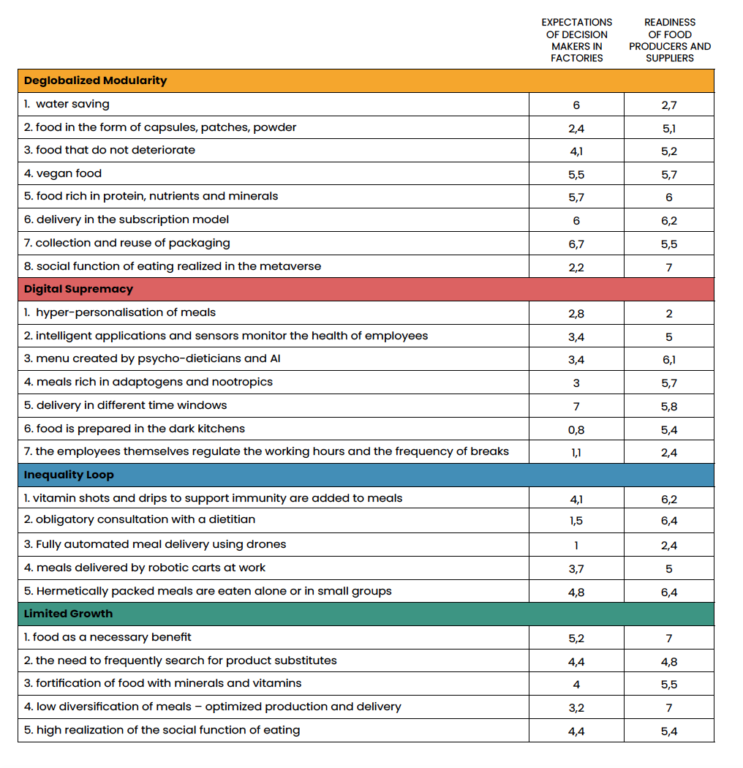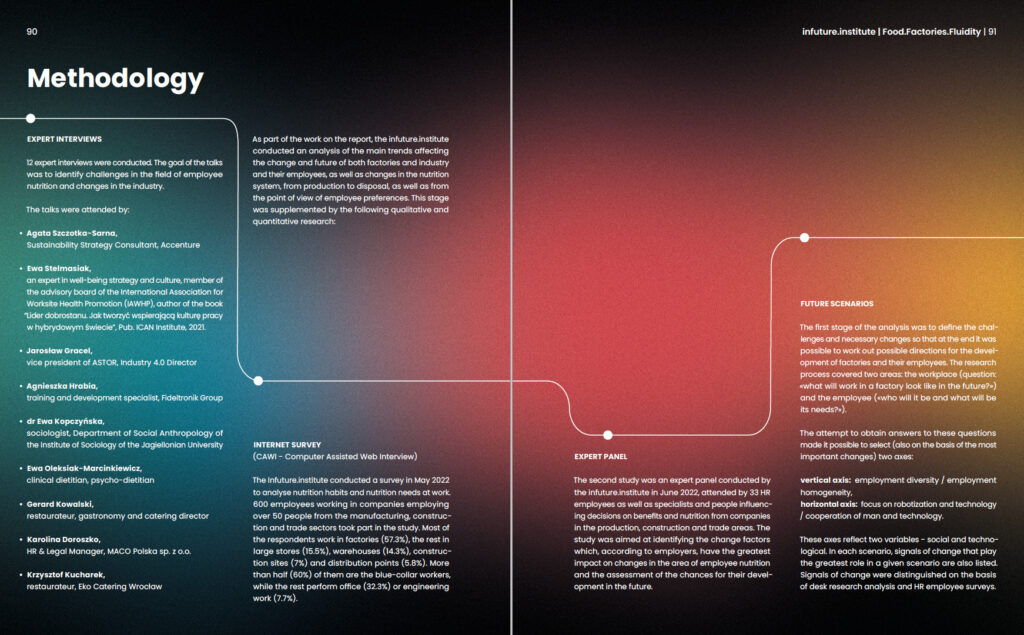Food. Factories. Fluidity. Nutrition in factories. 2030 future scenarios.
Nearly two-thirds of workers admit that they sometimes feel hungry at work, and 64 percent agree with the statement that hungry people become less effective. Our research answers key questions about the present and future of Polish factories in the context of employee nutrition.

“Food. Factories. Fluidity. Nutricion in Factories. Scenarios for the Future 2030” is an analysis of the main trends affecting change and the future of both factories and industry. The report also includes quantitative and qualitative research, expert opinions and a presentation of the latest findings on nutrition in Polish factories.
Food, factories, fluidity
- As indicated in the title, the report focuses on food and nutrition. One of the elements of employee care is to satisfy its basic needs, including nutritional ones. Almost 64% of respondents to the survey conducted for this report agree or strongly agree with the statement that when they are hungry at work, they become less effective1. Today, however, among the benefits offered by employers, those related to food are often missing. Meanwhile, healthy and balanced meals have a direct impact on the quality of life and efficiency of functioning, also at work.
- The issue of changes in factories and industry is also discussed. Factories are facing a transformation towards Industry 4.0. Increased automation (and life in the nanosecond culture) will affect not only the way of working, the recruitment process, benefits, but also the demand for new employee competences (e.g., combining digital skills with team management competences will become more important).
- Preparing for the changes described in this report will require a flexible approach (fluidity). Fluidity can mean here not only analysis of changing needs of employees, redefining existing processes, diversifying the portfolio, frequent verification of long-term strategies (the ability to quickly respond to changes), but also building shorter decision chains.
Although the emphasis in the report is on the future of nutrition in factories, a broad, non-silo view is very important when working on future scenarios. It allows for taking into account global changes in everyday functioning (e.g., increasing migrations, environmental awareness, building resilience, influence war or disrupted supply chains, among others, as a result of armed conflicts) – the impact of these changes on current activities is undeniable, at the same time, it is often not taken into account.
Future scenarios&Fluidity Matrix
In each scenario there is a description of the future scenario (taking into account the change factors, the profile of the factory and its employees), signals of change indicating the potential fulfilment of the vision, and the fluidity index, which determines the level of expectations of decision makers in factories and the readiness of food producers and suppliers.
- Deglobalized Modularity,
- Digital Supremacy,
- Inequality Loop,
- Limited Growth.
Fluidity Matrix, a tool for assessing the most relevant issues
Fluidity Matrix is a tool that allows you to assess the most important issues regarding the broadly understood nutrition area in factories, which were considered in four future scenarios. The matrix is made up of two axes. The horizontal axis indicates the expectations of decision makers in factories towards these issues, while the vertical axis indicates the readiness of food producers and suppliers to address them. Specialists determined the expectations of factory managers and the readiness of producers and suppliers on a seven-degree scale, by 2030.


Methodology




